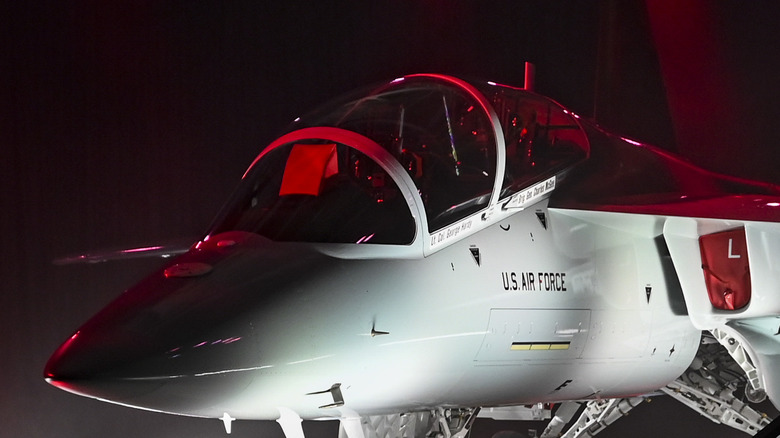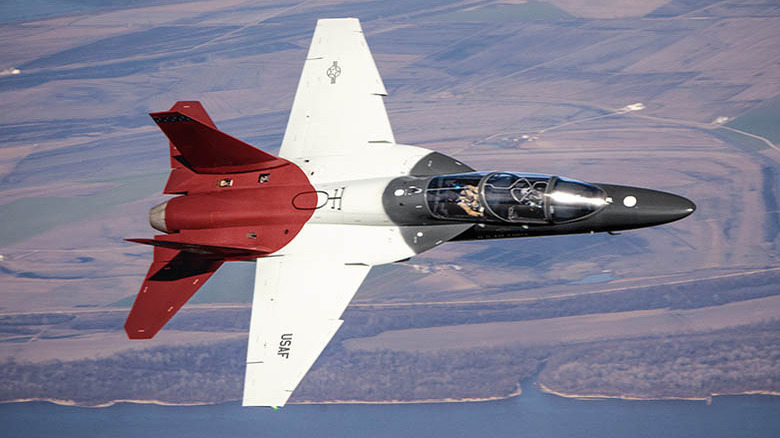The Incredible Capabilities Of The US Air Force's New Supersonic Training Jet
The U.S. Air Force's (USAF) combat training aircraft are amidst a digital-era transformation. The Boeing Company — working in partnership with Saab — is entering the final stages of engineering and development for the T-7A Red Hawk before starting production runs. The Red Hawks will replace the USAF's fleet of T-38 Talons, the first of which went into service before Alan Shepard became the first American to go to space in 1961 (via Air Force Times).
It is replacing a plane that went into service closer to the Wright brother's first flight than today, providing plenty of opportunities for improvement. Before the first wrench was turned on this project, Boeing aggressively capitalized on this fact. Using digital design techniques has already led to an 80% reduction in assembly time for the Red Hawk, allowing more planes to be produced in a shorter period. Additionally, the Red Hawk took less than three years to go from concept to first flight, which puts it on a faster development timeline than some land-based vehicles.
The Red Hawk showcases an impressive maintenance-minded design. High wings provide upright access to inspection points, a single refueling point is within reach of the maintenance control panel, and just four people can entirely change out the engine in half a day. Plus, half of the aircraft's processor slots will be unused during assembly, leaving the rest available for future upgrades (via National Defense Magazine).
A training jet for modern times
According to the USAF, Boeing will produce over 350 Red Hawk aircraft as part of a contract worth more than $9.2 billion. There's also speculation that the Red Hawk's design could be easily modified to incorporate radar systems, electronic warfare equipment, or under-wing weapon stations, making it an attractive purchase for other U.S. military branches or even international allies.
The training jet features a glass touchscreen cockpit that provides a more modern flair — as well as a more practical piloting experience, one would hope — and tiered seating, so both the instructor and the trainee have sufficient ability to pilot the aircraft without visual obstructions.
Production models of the T-7A Red Hawk sport a red tail section, a reference to the red-painted tails of the aircraft flown during World War II by the 99th Fighter Squadron, better known as the "Tuskegee Airmen." One of the planes they flew was the Curtiss P-40 Warhawk, which influenced the design of the T-7A Red Hawk.
In the same tradition of equality that the Red Hawk's name and design aspire to embody, the training jet is built to safely accommodate a wider variety of pilot body types and sizes than previous jets, allowing for a larger recruiting pool including more women than has historically been the case. Let's hope similar updates make their way to the USAF's other next-gen aircraft.

